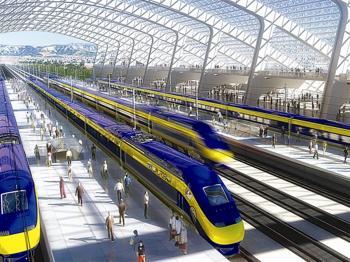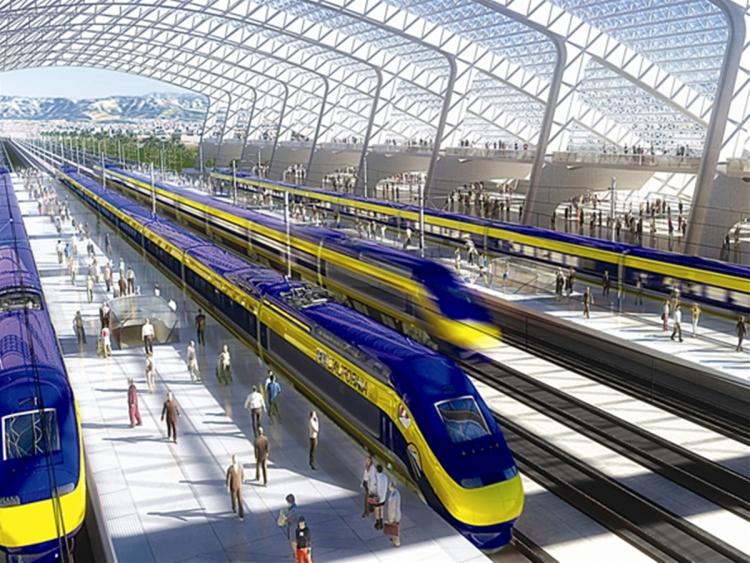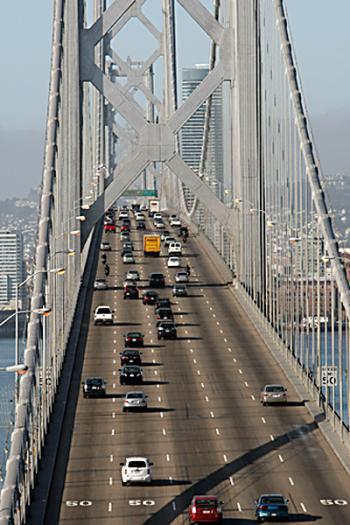California Submits Application for High-Speed Rail Funding
California Gov. Schwarzenegger announced his submission of the state’s application for nearly $4.7 billion.

Passengers wait to board high-speed bullet trains. Computer rendition courtesy of NC3D
|Updated:





